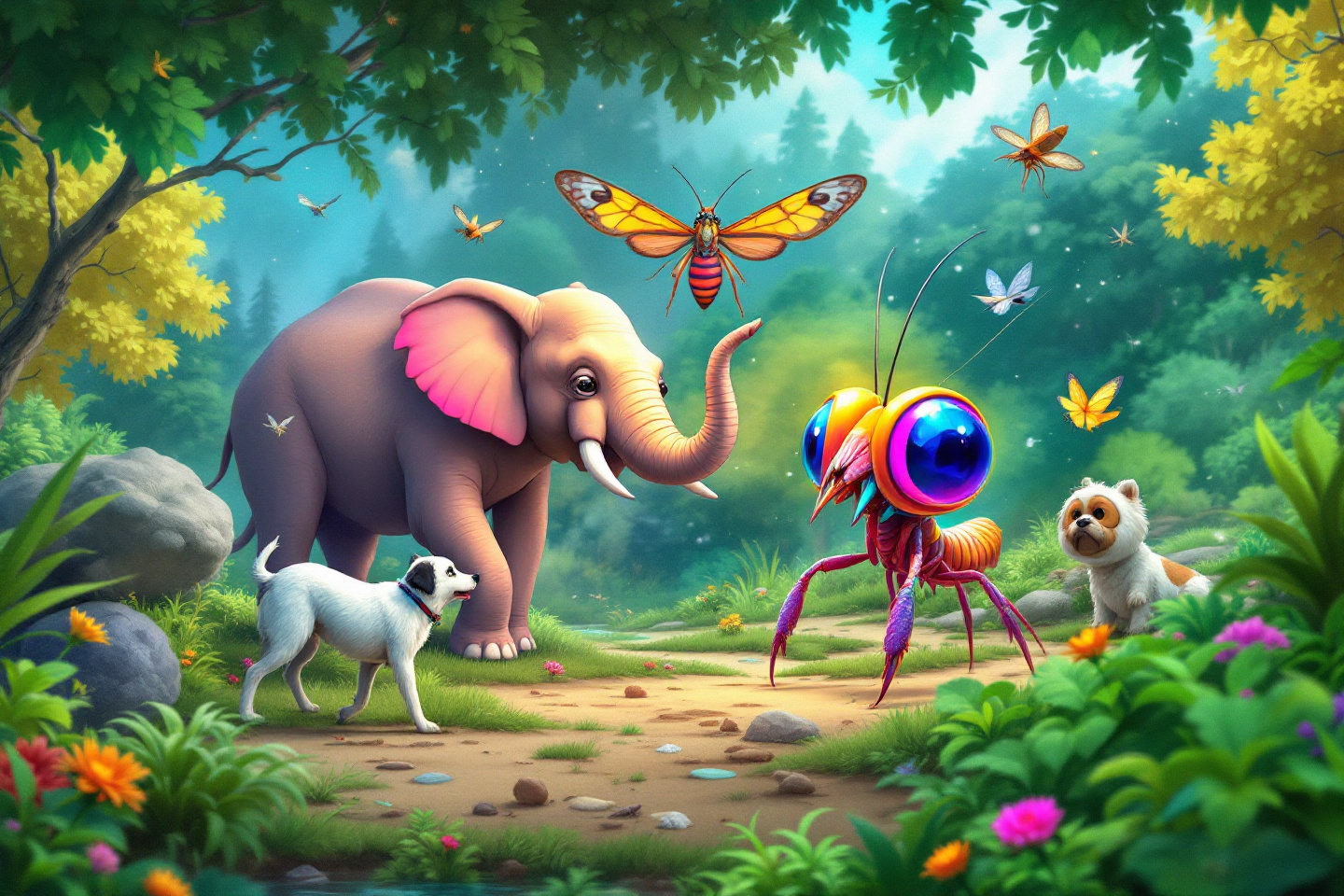Imagine walking into a room and instantly knowing who has been there before you. Picture sensing distant rain before it touches the ground or following invisible trails left behind by strangers. For humans, these abilities might seem impossible but for many animals, they are an ordinary part of existence.
The way we experience the world is limited by our senses, but animals navigate a vastly different reality. From the superior sense of smell, or olfactory ability, of dogs to the chemical communication of ants and the seismic sensitivity of elephants, nature has designed a breathtaking variety of sensory abilities that reveal an entirely different version of the world.
“What we perceive is only a fraction of what exists.”
Navigating the World Through Scent
While humans rely heavily on vision, many animals perceive the world primarily through scent. What seems like empty space to us is, for them, a layered map of invisible information.
Reading the World with The Noses
A dog’s sense of smell is legendary, but its true power is often underestimated. Their nostrils function independently, allowing them to determine the direction of a scent, much like how our ears help us pinpoint sounds. They can even smell the passage of time detecting whether a scent is fresh or fading.
- Dogs can distinguish identical twins by scent alone.
- They can detect cancer, changes in blood sugar, and even human emotions through sweat and breath.
- Their ability to follow scent trails is so precise that they can track footsteps hours after they were made.
The Scent Detectives of the Animal Kingdom
Elephants not only have an exceptional sense of smell but also use it in ways that rival even the most advanced technology.
- They can detect water sources buried underground.
- They distinguish between different human ethnic groups by scent alone reacting with fear to those known for hunting them.
- Their ability to detect subtle chemical changes helps them navigate social structures and identify potential mates.
The Ocean’s Bloodhounds
Sharks possess an extraordinary ability to detect even the faintest traces of blood in the water from miles away. Their highly sensitive olfactory system allows them to sense a single drop of blood diluted in millions of gallons of water.
- Some species can detect prey up to a quarter of a mile away.
- Their ability to follow scent trails in three dimensions makes them highly efficient hunters.
“To some, the air is empty. To others, it is a book written in scent.”
How Animals Speak Without Words
For many creatures, communication isn’t about sound, it’s about chemistry. Pheromones, invisible chemical signals, dictate social structures, warn of danger, and even manipulate behavior.
The Masters of Chemical Messaging
Ants rely almost entirely on chemical signals to maintain their highly organized societies. Their antennae function as highly sensitive detectors, interpreting messages left behind by their colony.
- Trail pheromones lead workers to food and dissipate when resources run out.
- Alarm pheromones trigger immediate defensive responses in the colony.
- Queen pheromones suppress worker reproduction, maintaining social order.
Love in the Air
Many insects, especially moths, use pheromones to attract mates from miles away. Some species are so finely tuned to these scents that they can follow a single molecule in the wind.
- Male moths navigate in darkness solely by the scent of a female’s pheromones.
- Certain orchids mimic insect pheromones to trick male bees into pollinating them.
The Social Chemists
Bees communicate through pheromones, shaping the behavior of their entire hive. Their queen releases a chemical that keeps the colony working in harmony, while alarm pheromones trigger defensive responses.
- Worker bees use scent trails to guide their nestmates to rich food sources.
- When a bee is killed, it releases an alarm pheromone that alerts others to danger.
“Communication doesn’t always need words, it can be whispered in molecules.”
Beyond Sight
While humans experience a fraction of the light spectrum, many animals see beyond what we can imagine.
A World Painted in Ultraviolet
Many birds perceive ultraviolet (UV) light, revealing patterns invisible to human eyes. What appears as a simple feather to us may glow with intricate UV markings that indicate health, species, or even hidden messages to potential mates.
- Kestrels use UV vision to track rodents, as urine trails reflect UV light.
- Many flowers have UV patterns designed to guide bees directly to their nectar.
Seeing Heat in Total Darkness
Pit vipers, boas, and pythons have specialized heat-sensing organs that allow them to “see” the body heat of their prey.
- They can detect temperature changes as small as 0.003 degrees Celsius.
- This allows them to hunt in absolute darkness, detecting warm-blooded animals with precision.
The Color Detectives
Mantis shrimp have some of the most complex eyes in the animal kingdom, capable of detecting a spectrum of colors far beyond human capability.
- They see 12 primary colors (humans see three).
- Their vision includes ultraviolet and polarized light, which helps them detect hidden prey and communicate in secret color codes.
“The world is painted in colors we can’t see and filled with signals we can’t detect.”
The Symphony of Vibrations
While we rely on sound waves traveling through air, some animals perceive vibrations through surfaces, using them as a secondary sense.
Listening with The Feet
Elephants communicate over long distances by producing low-frequency rumbles that travel through the ground as seismic vibrations. Other elephants detect these signals through their feet and trunks.
- They can “hear” approaching storms by sensing distant thunder through vibrations.
- They use seismic signals to coordinate herd movements and warn each other of predators.
Spiders: Feeling the World Through Webs
A spider’s web is more than a trap, it’s an extension of its senses. By detecting vibrations in their silk, spiders can determine the size, location, and species of an intruder.
- Some spiders use vibrations to “sing” courtship songs to mates.
- They can even differentiate between the struggles of prey and the presence of a potential mate.
“For some, sound is optional, vibrations tell them all they need to know.”
Final Thoughts
The way animals experience the world is vastly different from our own, revealing just how limited human perception truly is. From chemical messages that shape societies to vibrations that whisper secrets through the ground, nature offers an endless variety of ways to sense reality.
Understanding these unique perspectives does more than satisfy curiosity—it reminds us that the world is far richer than we perceive. By studying animal senses, we not only learn about them but also uncover new ways to enhance our own understanding of the universe.
“There is no single reality, only different ways of experiencing it.”



